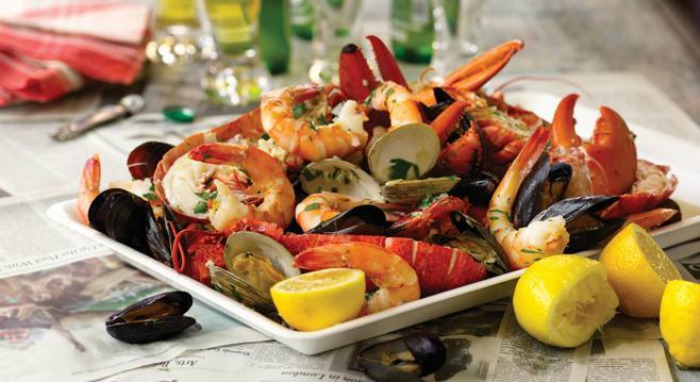Top rated specialized bike online store Lake Charles: How many gears should a road bike have? After the frame, gears are the most important thing to consider when choosing a road bike. Today many top end road bikes will come fitted with 12-speed cassettes. When paired with a double chainring this means you’ll have 24 gears. Remember however that some of these gear ratios will be duplicated in certain chainring/cassette combinations. More affordable road bikes tend to come with fewer gears. These cassette options should range from 8-speed to 10-speed, again most often paired with a double chainset. As for groupset brands, Shimano gearing is the most common, but the other major options are SRAM and Campagnolo. Shimano’s top end groupsets, Dura-Ace, Ultegra and 105 have a 12-speed cassette, while less expensive bikes may come with 10-speed Tiagra, 9-speed Sora or 8-speed Claris. Find extra info on bicycle repair Lafayette.
Equipped with internal cables (so that brake cables are hidden within the bike frame) and stock disc brakes (which offer the best stopping power), this bike offers an unbeatable price point at around $1,200 — especially if this is your entry-level bike! (However, pros have ridden this model to the top of the podium, too!) The relaxed frame geometry allows the rider to sit in a more upright position, placing less weight and stress on the arms, neck, and back. “This could be helpful for a first-time road bike owner or someone that is looking to begin riding longer distances,” says Joshua Metzl, orthopedic surgeon, Cat 4 bike racer, three-time Leadville 100 MTB Finisher, and five-time Ironman. “Plus, the lightweight frame and the 30-millimeter tires give the rider the ability to attack road and some gravel as well, if the conditions change.” The Allez is the lightest bike in its class without any bells and whistles, making it the perfect choice for those looking for all-day adventures on a race-proven platform, explains Pastore.
What’s the difference between race and endurance geometry? A key decision when choosing the best road bike for you is what you plan to do with it. Are you looking to go fast or race, or are you after a more comfortable bike for leisurely rides or long days in the saddle? Geometry is the key factor here. A full-on race bike will put you in a more bent-over riding position, with your head and shoulders lower down over the handlebar. That’s great when you have a need for speed, reducing your frontal profile to lower your wind resistance but can be uncomfortable, particularly for a beginner. On the other hand, bikes labelled “endurance” or “sportive” will be designed for a more upright riding position, with the bars higher and closer to the saddle. That delivers greater comfort on longer rides, but may make you a bit slower.
We found that the bike’s assistance felt far more natural than many of the other e-road bikes we tested this year. It’s as if you’ve got good legs—not the super legs of a pro, but just the fittest version of yourself. And it’s not just the smooth progression of assistance that made the ride seamless, it’s also the smooth cut-off in power. The Gain’s e-assist party shuts down at 20 miles per hour, leaving you to do all the work yourself. On some competitors’ bikes, this cutoff is jarring and draggy, but the Gain’s motor eases off gently. There were multiple times when we were riding along at 20 to 25 miles per hour in a group, and we didn’t even notice that the motor wasn’t working. That’s the best compliment we can give any e-bike.
Sharing features of Giant’s more expensive bikes, the Contend has a compact alloy frame with a sloping top tube. The D-Fuse seatpost and carbon fork are designed to add compliance at the rear and the front end respectively. Along with the endurance frame geometry this gives great comfort and handling, letting you ride for longer and inspiring confidence. There’s bags of low gearing, down to 1:1, to tackle uphills and Shimano 105 gives you quality shifting, although the rather heavy weight doesn’t make for sprightly performance. It’s a good value proposition for its price though. Discover extra details on https://www.capitolcyclery.com/.
Giant set out to improve the aerodynamic efficiency of the 2023 Propel while also making it more of an all-around performer. The new bike is still intended to slice through the air, and makes use of truncated airfoil tube profiles everywhere it matters: namely, the down tube, seat testingtube, seatstays, head tube, and fork blades. However, the new Propel also now strikes a much more svelte-looking profile that further blurs the lines between the all-out aero machine it’s supposed to be and semi-aero lightweights like Giant’s own TCR Advanced SL. Even without wind-tunnel testing, it was clear from our first pedal stroke that the Propel Advanced SL 0 is a proper rocket ship. It’s easy to bring up to high speeds and requires less effort to hold them. During group rides, we inadvertently kept riding away from our buddies on non-aero road bikes.
